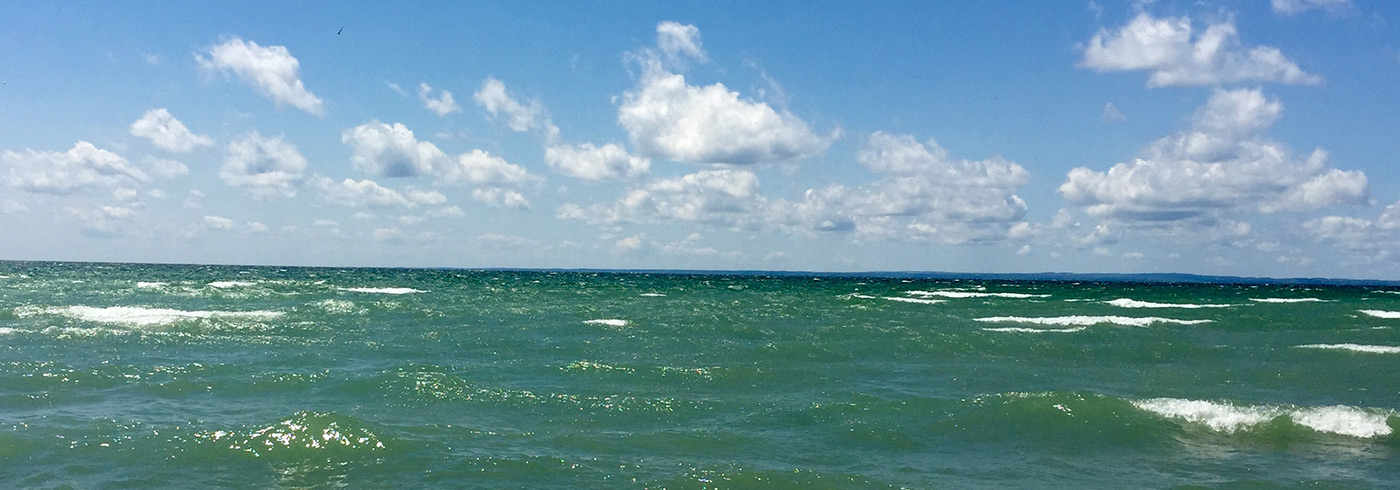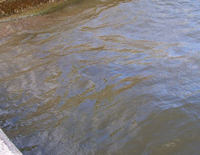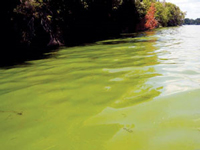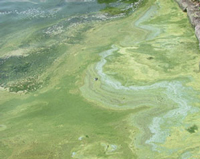Beach monitoring has concluded for the 2025 season.
Throughout the summer, Durham Region Health Department tests water at public beaches from the beginning of June to the end of August as part of its beach monitoring program. Tests carried out at all Durham Region beaches include testing water samples for high levels of bacteria to let beach visitors know which beaches are safe for swimming. Unless otherwise indicated, results reflect routine, weekly monitoring conducted by Health Department staff.
Find weekly beach results on Check&GO! Durham

Online, real-time inspection results for Durham Region's inspected public beaches are available in our online disclosure portal, Check&GO! Durham. Please note that Frenchman’s Bay East Beach is temporarily unavailable due to maintenance.
Visit durham.ca/BeachResults to find the latest inspection results for your favourite beach!
Weekly beach report media release archive
Blue-green algae
What is blue-green algae?
Blue-green algae are microscopic, plant-like organisms that occur naturally in ponds, rivers, lakes and streams. Blue-green algae can occur as blooms in the water, or can also be present in the water even if no bloom is seen. The algae are often blue-green in colour, but can also be olive-green or red.
| How to identify blue-green algae |
|
Blue-green algae monitoring and signage
What is Blue-Green Algae? sign
Blue-green algae signs will be posted at all public beaches in Durham Region throughout the swimming season. What is Blue-Green Algae? will provide the public with general information about blue-green algae and precautionary measures you can take when visiting our beaches.
If a blue-green algae bloom is identified by the Health Department through a visual confirmation and/or confirmation by water quality testing conducted by the Ontario Ministry of Environment, Conservation and Parks (MECP), a Water Quality Advisory for blue-green algae will be posted at the affected beach and will replace the general information sign.
If a Water Quality Advisory is issued for blue-green algae at a beach location, signage will remain in place for the remainder of the beach season.
Testing for blue-green algae is not conducted on a routine basis. Water conditions can change quickly and at any time. You may see a Water Quality Advisory sign posted at beaches where you may not see an algae bloom. Always take a cautious approach. Toxins that can be harmful to both humans and animals may still be present.
To report blue-green algal blooms, call the MECP's Spills Action Centre at 1-866-MOE-TIPS (663-8477), or call the Durham Health Connection Line.
|
Swim safe |
|
If the test results are higher than the provincial guidelines for recreational water, we let the public know by putting up a warning sign at the beach and posting the results on Check & Go! Durham, our public reporting page. If there is no warning sign posted, you can still follow some general safety tips.
In Durham Region, all public beaches have permanent 'Notice' signs posted. These signs remind visitors not to swim for at least 48-hours after heavy rainfall, as bacteria levels in the water may be higher and could be harmful to your health. |
|
What are the risks of going into the water? |
|
We may post a sign because the water has bacteria that could give you an infection, especially if you have an existing infection or open cut. The most common issues are:
The people who are most at risk for these infections are:
|
|
What is polluting our beaches? |
|
Several sources of water pollution can cause us to post a sign. These include:
How can you help to keep our beaches clean and safe for swimming?
Adapted with permission of the Ministry of the Environment, Conservation and Parks. |
Contact Us







 Algae may be in balls or flakes in the water, like a pea puree.
Algae may be in balls or flakes in the water, like a pea puree. There is a dense bloom and may look like a paint spill or scum on the water.
There is a dense bloom and may look like a paint spill or scum on the water. Durham Region Health Department tests the water at public beaches for bacteria to help you know if it’s safe to swim.
Durham Region Health Department tests the water at public beaches for bacteria to help you know if it’s safe to swim.